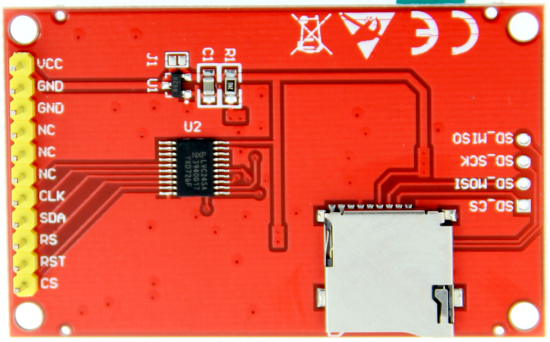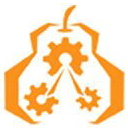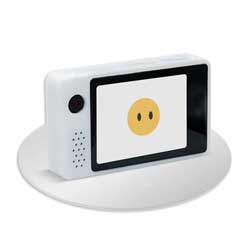- sales/support
Google Chat: zj734465502@gmail.com
- sales
+86-0755-88291180
- sales01
sales@spotpear.com
- sales02
dragon_manager@163.com
- support
tech-support@spotpear.com
- CEO-Complaints
zhoujie@spotpear.com
- sales/support
WhatsApp:13246739196
- HOME
- >
- ARTICLES
- >
- Common Moudle
- >
- LCD
1.8inch TFT display User Guide
Product Description
- 1.8-inch color screen,support 65K color display,display rich colors
- 128X160 resolution, clear display
- Using the SPI serial bus, it only takes a few IOs to illuminate the display
- With SD card slot for convenient function expansion
- Provide underlying libraries and rich sample programs for Arduino, C51, and STM32 platforms
- Military-grade process standards, long-term stable work
- Provide underlying driver technical support
Product Parameters
| Name | Parameter |
| Display Color | 16BIT RGB 65K color |
| SKU | MAR1801 |
| Screen Size | 1.8(inch) |
| Type | TFT |
| Driver IC | ST7735S |
| Resolution | 128*160 (Pixel) |
| Module Interface | 4-wire SPI interface |
| Backlight | 2 White Led |
| Active Area | 28.03x35.04 (mm) |
| Module PCB Size | 38.30x62.48 (mm) |
| Operating Temperature | -20℃~60℃ |
| Storage Temperature | -30℃~70℃ |
| Operating Voltage | 5V/3.3V |
| Power Consumption | TBD |
| Rough Weight(Package containing) | 18 (g) |
Interface Definition

| Serial number | Pin label | Description |
| 1 | VCC | LCD power supply positive (3.3V ~ 5V) |
| 2 | GND | LCD power supply |
| 3 | GND | LCD power supply |
| 4 | NC | None definition, retain |
| 5 | NC | None definition, retain |
| 6 | NC | None definition, retain |
| 7 | CLK | LCD screen SPI bus clock signal |
| 8 | SDA | LCD screen SPI bus write data signal |
| 9 | RS | LCD register / data selection signal, low level: register, high level: data |
| 10 | RST | LCD recharge signal, low level reset |
| 11 | CS | LCD screen selection signal, low level enable |
Connection Arduino

How to use on Arduino
- Step 1: Download the test program
- Download the Arduino test program from the program download bar
- For related test program descriptions, please refer to the test program description documents in the program package
- Step 2: Connect the Arduino development board
- Plug the module straight into the Arduino development board
- After the module is plugged in, power on the Arduino development board
- Step 3: Copy dependent libraries
- Make sure that Arduino IDE has been installed on the computer (if not installed: Arduino IDE download website)
- After installing the Arduino IDE, you need to copy the dependent libraries to the Arduino project directory, as follows:
- (1) Unzip the downloaded test package
- (2) Copy the dependent libraries in the Install libraries directory of the program package (as shown in the figure below) to the libraries folder of the Arduino project directory (Arduino project directory)

- Step 4: Compile and download the program to the development board
- Open the sample to be tested in the Example directory of the package, compile and download (compile and download)
- Step 5: Observe the operation of the program
- After the program is downloaded, run it directly and observe the running status. If it can be displayed normally, the program has run successfully, as shown in the following figure (take the colligate_test test program as an example):


TAG:
PC USB Secondary Screen
Raspberry Pi 5
Industrial USB TO RS232/485 Serial UART Converter FT232RNL Compact Size
ESP32 C3 MINI TV
Computer Desktop Monitor Display
LuckFox Pico Camera
RS485 to Ethernet
CPU Monitor Display
RV1103 SC3336
Raspberry Pi 2-Channel Isolated CAN Bus Expansion HAT Dual Chips Solution Built-In Multi Protections
Raspberry Pi 5 ABS Case
Jetson 1.5inch LCD
Raspberry Pi Mini TV
Raspberry Pi 15.6 inch FHD Monitor (C) LCD 1080P Capacitive TouchScreen Display Type-C/HDMI For Computer PC
Industrial Isolated 4CH RS485 TO POE ETH (B) RJ45 Converter UART For Modbus
Industrial-grade isolated 2-way RS485 hub repeater One RS485 TO Two RS485
Sipeed NanoCluster Mini Cluster Board mini data center For Raspberry Pi CM45 / Computer /LM3H /M4N
RP2040 Camera
UART Serial Server
1.54 inch Passive NFC e-Paper ink (G) RYBW Display Screen No Need Battery Wireless Power & Data Transfer
TAG:
ESP32 S3 N8R8 ST7789 2.8inch LCD Captive TouchScreen Display 240x320
ESP32 Thermal imaging
ESP32-S3 1.28inch Round LCD
Raspberry Pi 5 AI Hailo8 26Tops PCIe M.2 NVMe HAT Plus For Pi5
Raspberry Pi Pico 2 RP2350B Linux
DeepSeek AI Voice Chat ESP32 C6 Development Board 1.69 inch LCD Display 240x280 1.69inch TouchScreen Programmable Watch
SpotPear
NVIDIA
Arduino MLX90641
EG25-G Mini PCIe SIMCom 4G LTE Cat-4 Global GNSS PCI Express Mini Card
XIAO-nRF52840 Plus
Programmable Keyboard
Raspberry Pi 5 PCIe to M.2 SSD
Milk-V Duo Linux Board
Power Manager Module
SpotPear
Raspberry Pi Pico 2 RP2350 USB A Development Board
Raspberry Pi 5 Argon-ONE-V3-M.2-NVME-PCIE-Expansion-Board Argon ONE V3 Case
11.6 inch LCD In-Cell Type C HDMI Capacitive Touchscreen Display Raspberry Pi Jetson Nano mini PC 1768x828
ESP32-S3 7inch LCD Display 7 inch TouchScreen 7B 1024×600 N16R8 CAN RS485 Sensor




